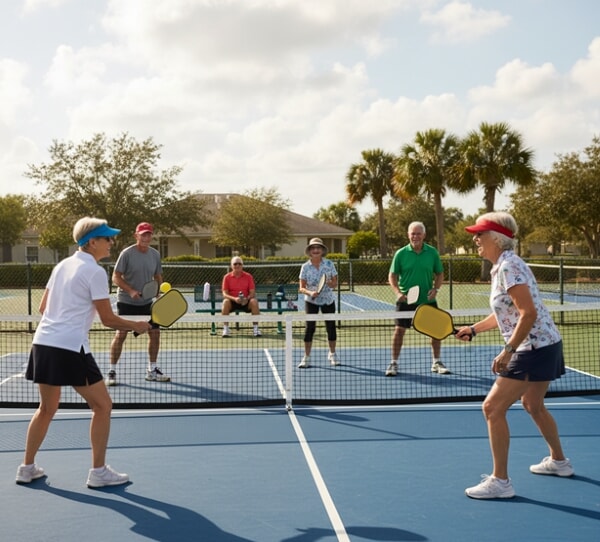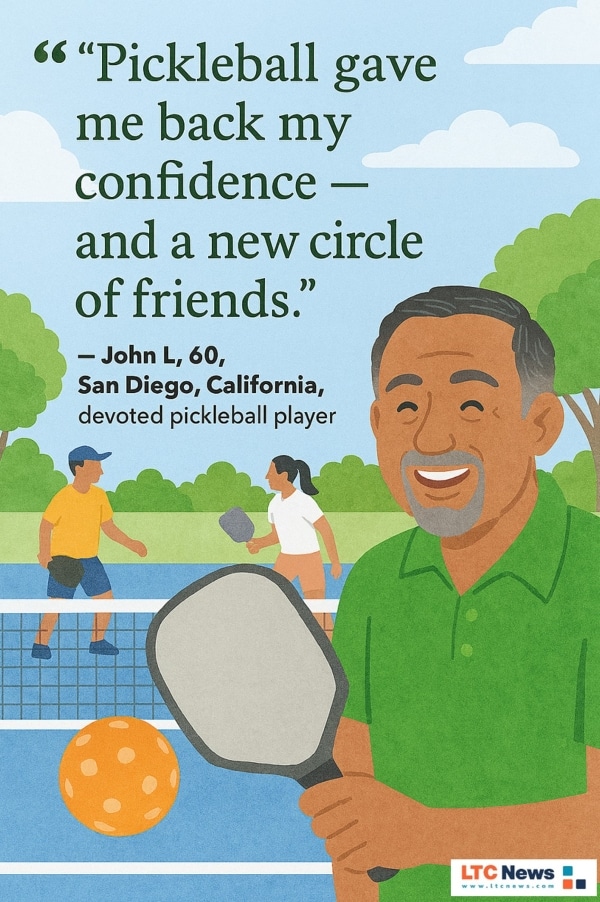7 Low-Impact Activities to Keep You Active After 50

Most people I speak with tell me that staying active feels different from how it did in their 30s. Back then, you might have been able to run five miles without a second thought. Today, your knees might remind you quickly if you try the same thing. Recovery takes longer, and even a weekend of yard work can feel like playing tennis all day.
That doesn’t mean the best years of fitness are behind you. In fact, shifting to low-impact activities has given me a new kind of freedom. Instead of dreading workouts, there are options that can energize you without leaving you sore for days. Swimming laps can clear your head after a long week, and a simple walk with friends can give you the same sense of accomplishment that pounding the pavement once did.
For example, there is a guy now 60 who is a devoted pickleball player. He started playing after his doctor advised him to ease up on tennis due to shoulder pain. Not only has the lighter paddle and smaller court kept him injury-free, but he’s also built a whole new circle of friends at the local community center.
Watching their enthusiasm is a reminder that staying active isn’t only about building strength or protecting your heart — it’s also about finding connection and joy.

Experts say that even gentle exercise preserves independence and quality of life. Low-impact activities are critical as we age because they reduce strain on joints while still providing significant physical and mental benefits.
That shift from chasing intensity to embracing sustainability makes all the difference. Low-impact exercise doesn’t just keep your joints happy; it steadies balance, sharpens memory, improves sleep, and strengthens resilience. Most importantly, it keeps you moving forward with confidence.
Seven Enjoyable Activities to Add to Your Life
1. Swimming: Total-Body Fitness with Less Joint Stress
Swimming is one of the most joint-friendly workouts you can do as it supports cardiometabolic health and physical fitness in older adults. The buoyancy of water supports your body, reducing impact on knees, hips, and spine. At the same time, water offers resistance, which strengthens muscles and improves cardiovascular endurance. Aquatic exercise can also be fun for many people.
Benefits of swimming include:
- Lower blood pressure and improved heart health
- Stronger muscles without heavy weights
- Better balance and coordination to reduce fall risk
Many community centers and gyms offer water aerobics or lap swimming, making this an accessible choice year-round.
2. Cycling: Endurance Without Impact
Cycling aligns with public health objectives for physical activity and caters to the unique requirements of older adults. It helps decrease fat mass, lower high blood pressure, and manage cholesterol levels.
Cycling, whether outdoors or on a stationary bike, helps build endurance, strength, and balance without putting undue stress on your joints. It’s beneficial to manage high blood pressure or cholesterol.
Research shows cycling can:
- Lower body fat
- Improve walking ability and reaction time
- Boost mood and reduce anxiety
If road cycling feels intimidating, start with a recumbent or upright stationary bike for a safe and convenient option.
3. Tai Chi: Mind-Body Balance
Tai Chi combines slow, flowing movements with controlled breathing and mindfulness. This centuries-old practice is sometimes called “meditation in motion.”
It improves:
- Flexibility and muscle strength
- Balance, reducing fall risk
- Cognitive health and anxiety management
Tai Chi also has a positive impact on hypertension, cognition, osteoarthritis, and respiratory health. Healthcare professionals often recommend Tai Chi because it’s low-cost, easy to learn, and effective for people at nearly any fitness level.
4. Walking: The Most Accessible Workout
Walking remains one of the simplest and most effective low-impact activities. According to the CDC, adults 65 and older should aim for at least 150 minutes of moderate physical activity weekly — and a brisk 30-minute walk five days a week gets you there.
Walking supports:
- Heart health and blood pressure control
- Weight management
- Better sleep and reduced stress
Because it requires no special equipment, you can fit walking into your daily routine — whether it’s around your neighborhood, inside a mall, or while running errands.
This low-impact movement helps lower the risk of chronic conditions such as cardiovascular disease, hypertension, type 2 diabetes, and cancer. Since walking supports sleep and mental health while increasing resilience, it is a powerful practice.
5. Pickleball: Social and Fun Fitness
Pickleball has experienced a surge in popularity, particularly among older adults. Pickleball combines elements of tennis, badminton, and table tennis into a sport designed for older adults. Its compact court and lighter gear lessen physical strain, making it accessible for individuals with mobility challenges.
Since it is played on a smaller court with a lighter paddle and slower ball than tennis, it’s easier on the joints but still delivers a cardiovascular workout.
A single session can:
- Burn over 500 calories
- Improve agility, coordination, and balance
- Build strong social connections
The social aspect is one of pickleball’s most significant benefits. Staying connected with others is as important to healthy aging as maintaining physical activity.
6. Gardening: Exercise Disguised as a Hobby
You may not think of gardening as exercise, but digging, planting, and weeding incorporate aerobic strength, flexibility, and endurance. Gardening offers a mix of aerobic, balance, and resistance activity — plus the added benefit of producing fresh, healthy food.
Studies link gardening to:
- Lower rates of diabetes and heart disease
- Reduced stress and stronger immune function
- Improved overall life expectancy among older adults
It’s also a great way to spend more time outdoors, which supports mental health and vitamin D levels.
7. Golf: A Lifetime Sport
Golf is enjoyed by 60 million participants worldwide and is especially popular among older adults. It combines walking, coordination, and controlled force movements, making it an effective way to maintain long-term health.
Research has linked golf to cardiovascular and respiratory benefits, improved mental well-being, and greater life expectancy. Golf combines walking, strength, and balance with mental focus.
The research indicates that older golfers typically possess stronger grip strength and better balance than their non-golfing peers.
Golf offers:
- Cardiovascular and respiratory benefits
- Improved mental well-being
- Opportunities for social connection
While it does require more time and resources than some activities, golf remains one of the most sustainable sports that can be enjoyed into your 70s, 80s, and beyond.
Staying Active Supports Independence
Low-impact sports don’t just keep you moving — they protect your independence. Strong muscles, healthy joints, and good balance lower your risk of falls and keep you capable of handling daily activities without relying on others.
That independence is crucial when you consider long-term care. Nearly 56% of Americans aged 65 and older will require assistance with daily living at some point, according to the U.S. Department of Health and Human Services. Staying active lowers your risk, but it doesn’t eliminate it. That’s why many families plan ahead with Long-Term Care Insurance, which helps pay for home care or assisted living when you need it at some point in your life.
Be sure to seek a qualified professional who can offer accurate Long-Term Care Insurance quotes from all the top-rated insurance companies that offer long-term care solutions.
You can explore the LTC News Cost of Care Calculator to see current and future care costs where you live and learn more about planning options.
The Bottom Line
You don’t have to run marathons or lift heavy weights to age well. Low-impact activities, such as swimming, walking, Tai Chi, and pickleball, offer powerful benefits for your body, mind, and social life — without putting undue stress on your joints. The key is consistency and finding something you enjoy enough to do regularly.
So, the real question is: which activity will you try first?


